¶ What is Infinity?
Infinity is a high-quality display solution based on PWM+PAM hybrid drive technology. Through the deep integration of control systems, intelligent algorithms, full grayscale calibration, and PWM+PAM hybrid drive ICs, it is the industry's first mass-produced hybrid drive solution dedicated to delivering extraordinary MLED display performance.
Among them, the PWM+PAM hybrid drive technology is the industry's first mass-produced drive IC available for public sale. It breaks through the technical limitations of traditional PWM driver, shifting LED displays from pulse-width-only modulation to a dual modulation path of both amplitude and pulse width. This unlocks the full potential of MLED for superior picture quality.
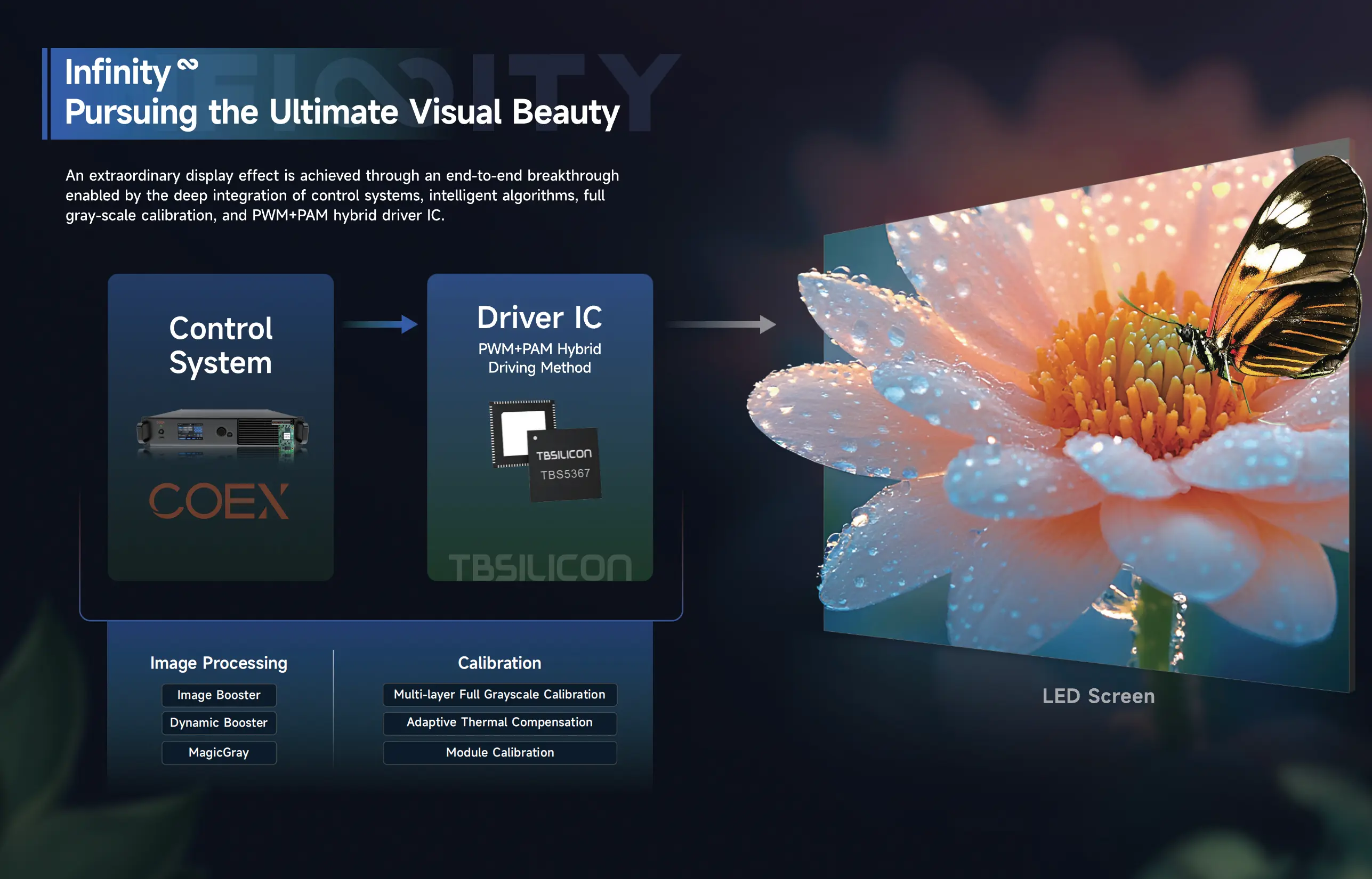
¶ What are the Core Technologies of Infinity (PWM+PAM)
LEDs are current-driven semiconductor light-emitting devices capable of ultra-fast switching at nanosecond (ns) speeds. The luminous intensity (L) of an LED depends on both the conducting current (I) and the conducting time (t).
Given:
T = Switching cycle period
t = ON-time within each cycle
I = Current during ON-time
The brightness is defined as:
L = I × t / T
This means LED brightness is proportional to both the ON-time (t) and driving current (I).
In the Infinity system, the drive IC and LEDs form the display panel, with the IC controlling the LED's luminous characteristics. Unlike conventional PWM (Pulse Width Modulation)-only LED displays, Infinity introduces an innovative hybrid drive technology combining PWM + PAM (Pulse Amplitude Modulation).
In the Infinity system, the drive IC and LEDs form the display panel, with the IC controlling the LED's luminous characteristics. Unlike conventional PWM (Pulse Width Modulation)-only LED displays, Infinity introduces an innovative hybrid drive technology combining PWM + PAM (Pulse Amplitude Modulation).
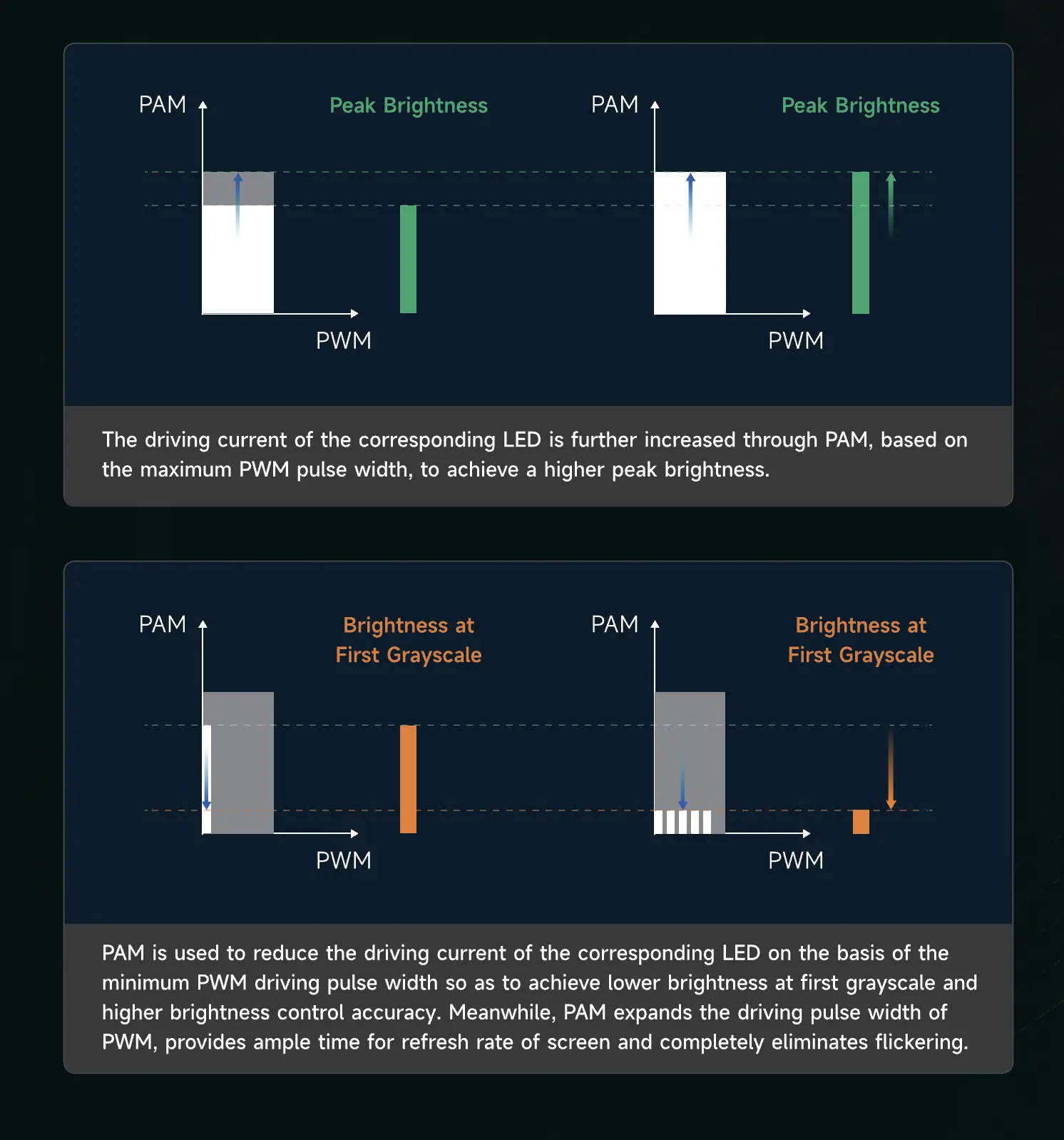
¶ What are the advantages of Infinity?
¶ More Gray Scale
Conventional mainstream PWM driver IC typically offer 16-bit PWM pulse-width control, where 16-bit equates to 65,536 levels of pulse-width precision. However, the hybrid PWM+PAM drive technology builds upon this 65,536-level PWM control by incorporating an additional 8-bit PAM (Pulse Amplitude Modulation) for current amplitude adjustment. This enhancement enables LED displays to achieve 16+8=24-bit grayscale (equivalent to 16.77 million levels).
Powered by Infinity technology, this innovation breaks through the 16-bit limitation of traditional PWM-driven LED displays, delivering significantly higher grayscale precision for superior image quality.


¶ More Refresh Rate
PAM extends the driving pulse width of PWM, providing ample time for screen refresh and completely eliminating flicker. By maintaining the same luminous intensity while reducing current and increasing LED emission frequency, the display's refresh rate is significantly enhanced.
In practical testing:
Peak brightness can be increased from 600 nits to 1500 nits
Gray-scale initiation refresh rate can be improved from 60Hz to 360Hz in actual displays
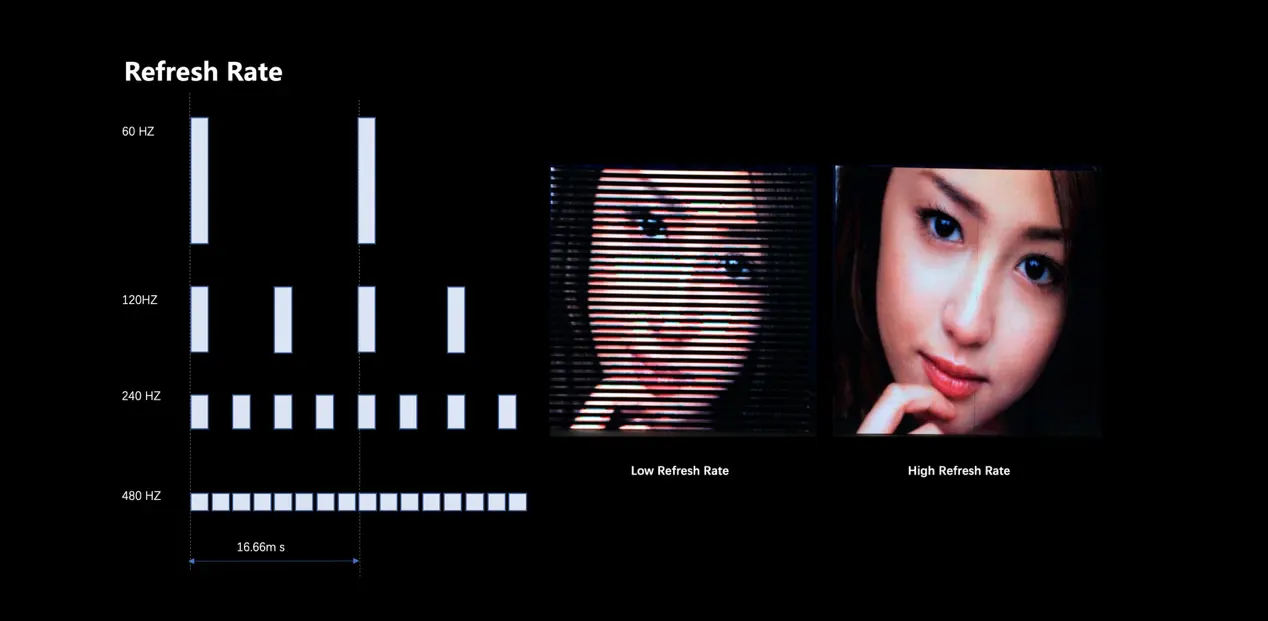
¶ More Peak Brightness Enhancement
In high luminance areas, the hybrid PWM+PAM drive further amplifies the LED driving current beyond the maximum PWM pulse width. Based on the luminous intensity formula L = I × t/T, while maintaining constant illumination time (t) and cycle period (T), the technology boosts peak brightness by increasing driving current (I) for corresponding RGB sub-pixels.
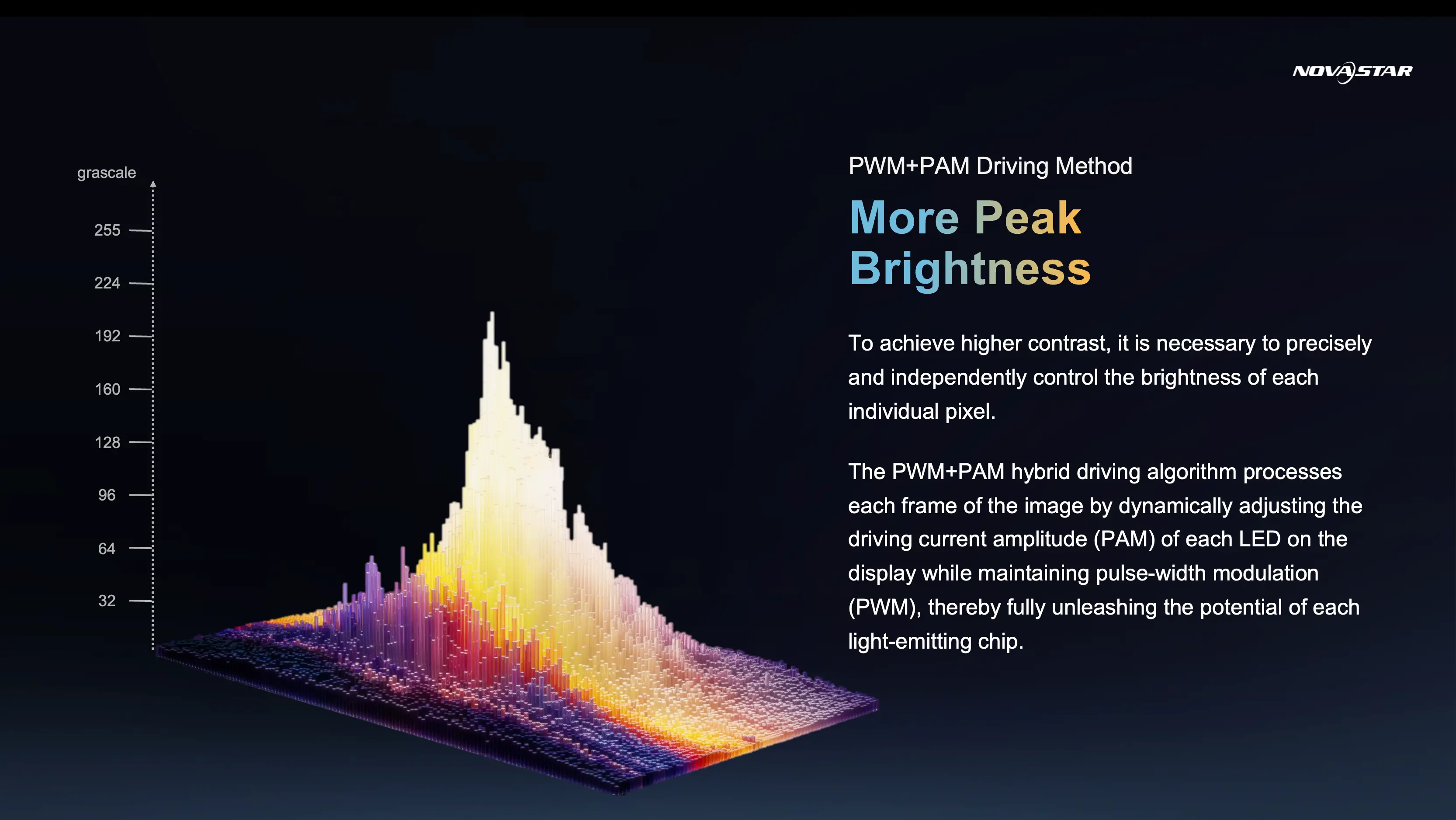
¶ More Dynamic Range
Based on the minimum PWM driving pulse width, PAM is used to reduce the driving current of the corresponding LED. That is, when the light-emitting time and period remain unchanged, the luminous intensity of the LED is reduced by decreasing the current of the RGB pixels. Meanwhile, the maximum luminous capability of the LED (i.e., peak brightness) is increased, thereby enhancing the dynamic range of the LED display.
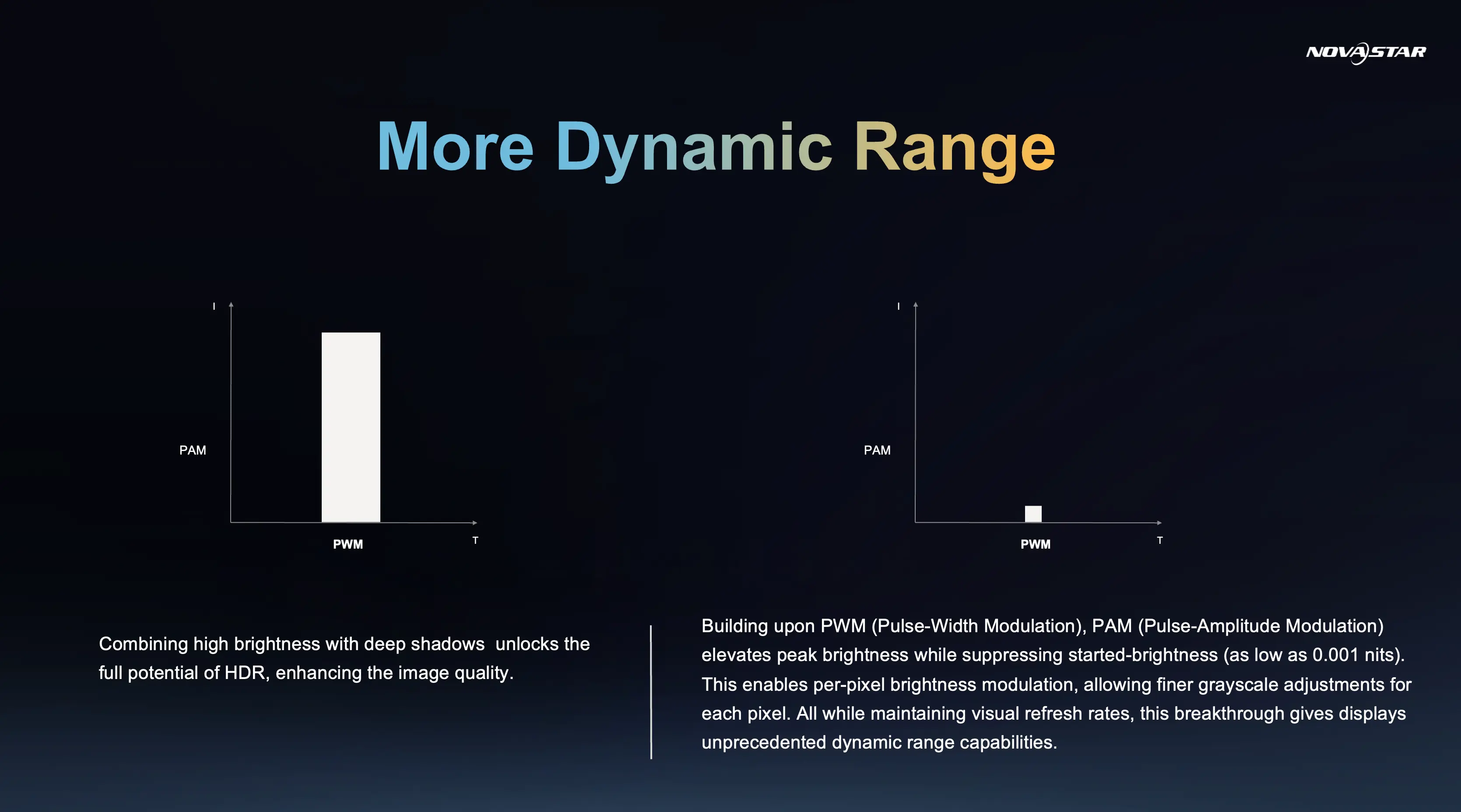
¶ More Color Accuracy
All current LED screens have the problem of heat generation. As the screen temperature rises, the R, G, and B lamps will experience brightness attenuation to varying degrees, leading to local color deviation, cyan blocks, and red stripes on the LED screen, which seriously affects the display effect.
The Infinity solution can address the impact of temperature on screen brightness and chromaticity. This technology achieves a color temperature shift of <100K, a color coordinate shift of <0.01, and an overall brightness loss of <5%.
As it is a common-cathode drive chip with PWM+PAM, and the per-pixel current control precision is 6 bits, it can solve the grayscale deviation caused by inaccurate current control of the LED drive chip. Additionally, it can finely control the luminous intensity of LED beads, making the screen more prominent in displaying light and dark details of images when presenting different grayscale levels. The grayscale level of the display screen can be expanded to 24Bit at maximum, enabling the LED screen to show richer color layers.
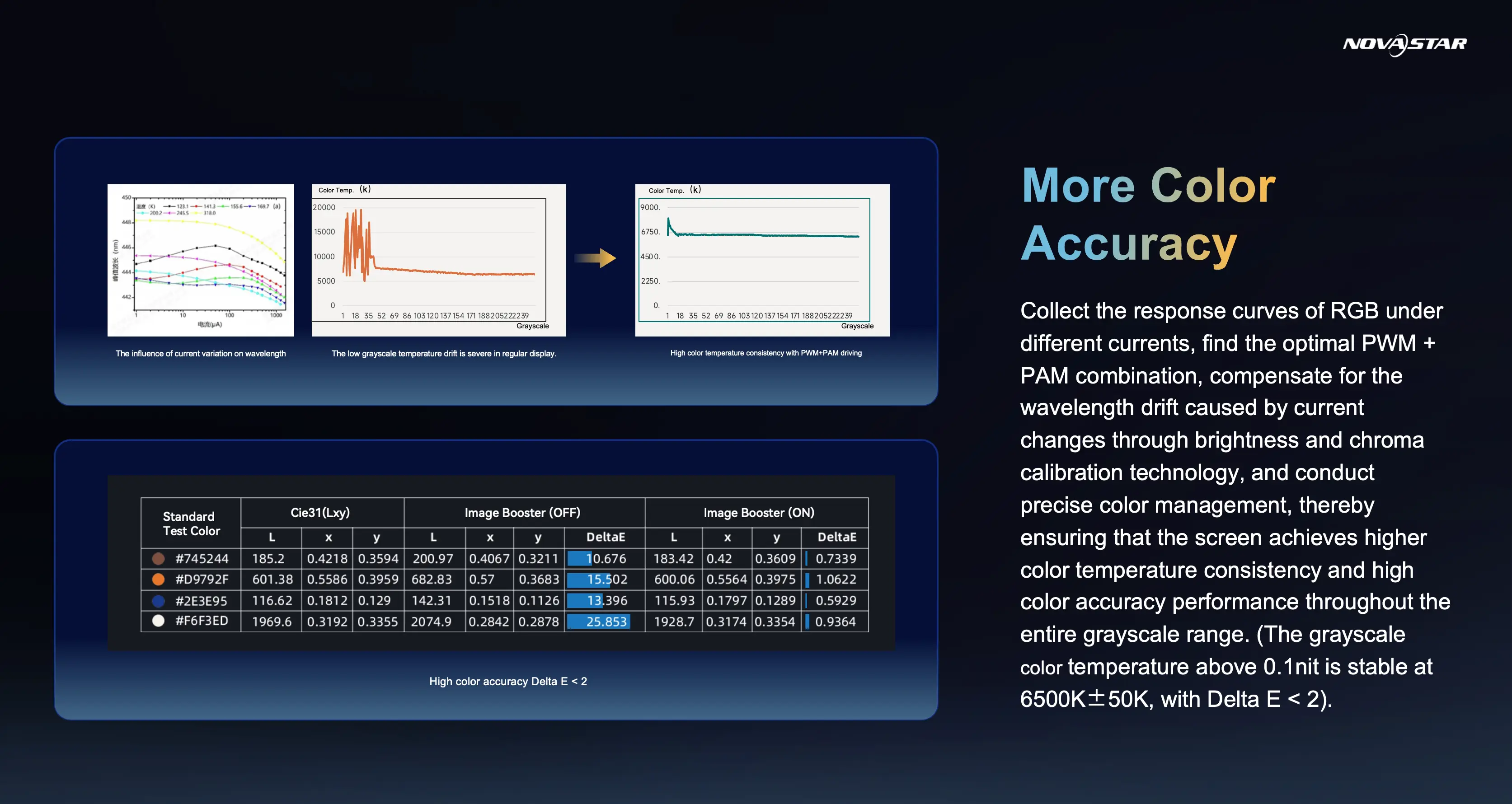
¶ Low Temperature Rise & Low Power Consumption
The driver chip with hybrid drive technology enables precise control over point-by-point current, achieving pixel-level power consumption optimization compared to conventional driver chips. When only one LED is lit within the control area of an IC, the channels for other LEDs on the same IC automatically enter a low-power mode. This precise control reduces power consumption by over 20% in practical tests compared to traditional PWM-driven LEDs. Combined with algorithmic innovations, it also minimizes temperature rise during operation.
In summary, hybrid drive technology offers richer brightness expression methods than traditional PWM, unlocking new creative possibilities for LED displays. Its advantages are embodied in the "Five Highs and Two Lows" capabilities, complemented by Infinity full-link solutions.
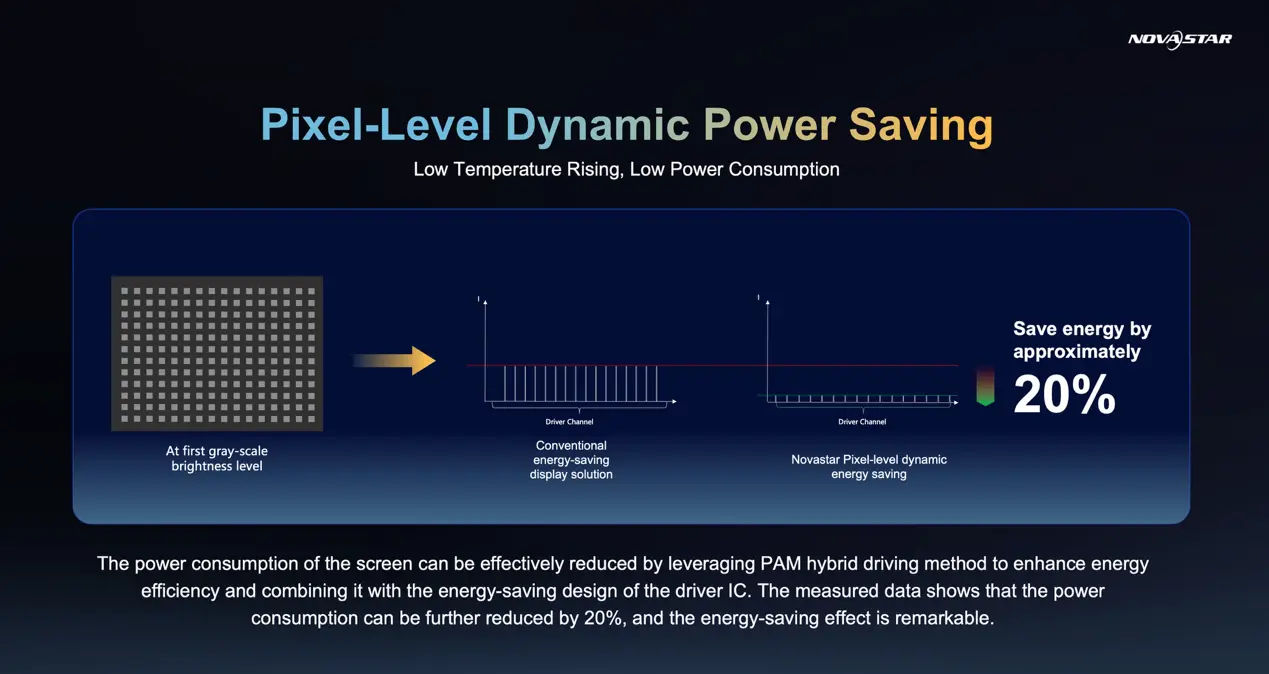
We consistently enhance and refine the content of our Wiki articles.
If you find any mistakes or errors, please contact us.
Your continuous feedback and support will help us further improve our products and content.